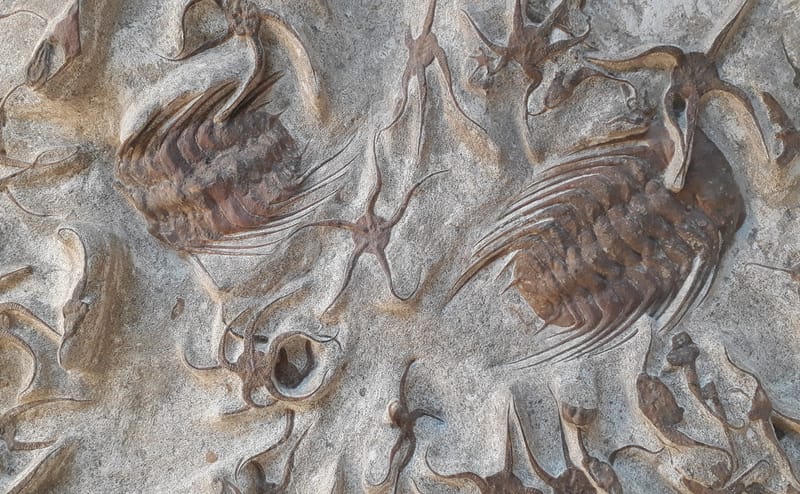Art and culture: the immense heritage of the Italian Capital of Culture 2026
L'Aquila, Italy's capital of culture 2026. After the 2022 attempt, the capital of Abruzzo tries again with the project "L'Aquila. Multiverse City" and wins.
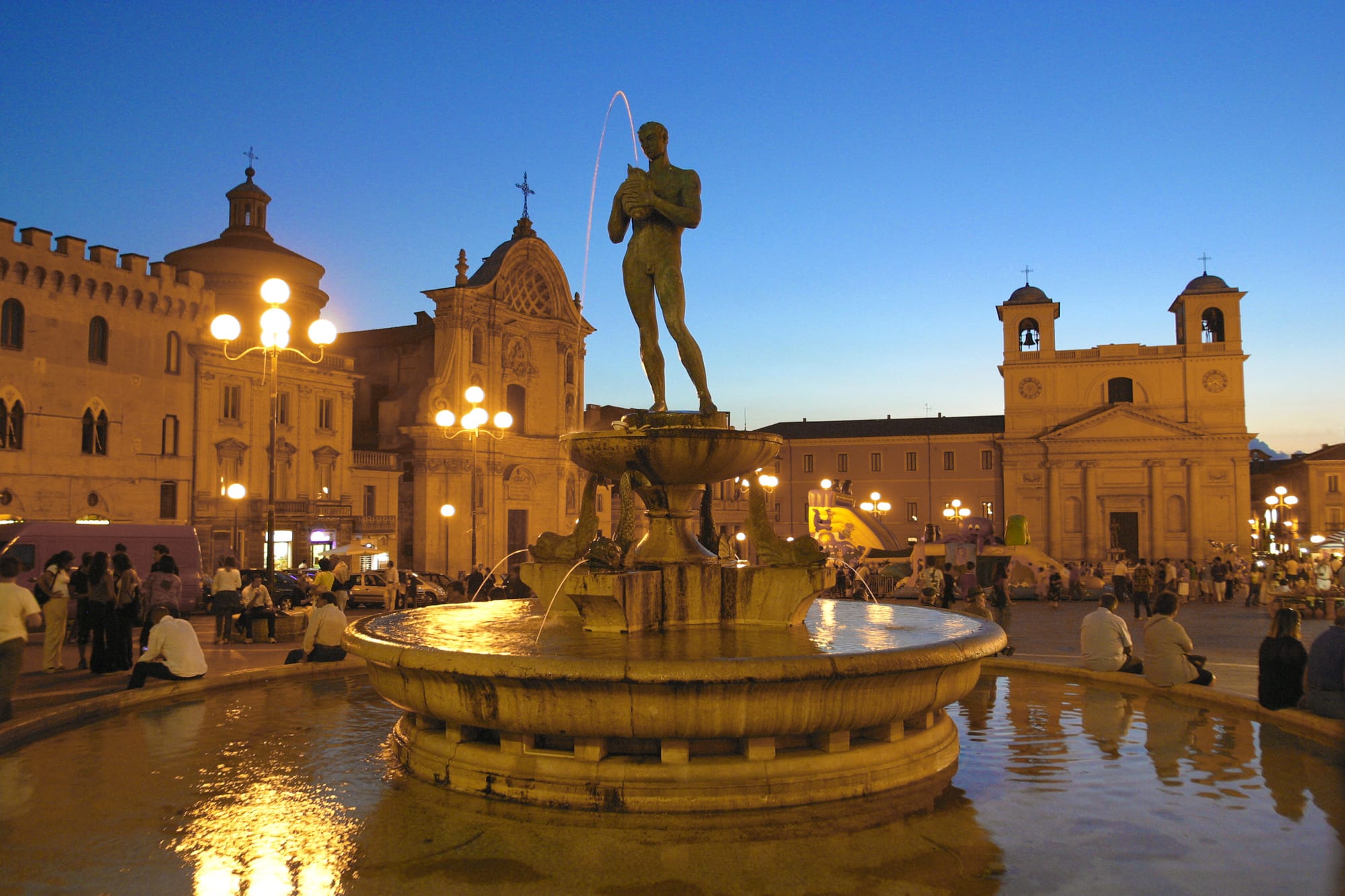
Good second for L'Aquila, a candidate for Italian capital of culture. After the 2022 attempt, the Abruzzo capital tries again with the project "L'Aquila. Multiverse City" and won. The city has in fact received the coveted title for the year 2026, and while the controversy over this victory rears its head again - complete with announced parliamentary questions - starting with the alleged favoritism denounced by some political figures, the city is beginning to prepare for the busy calendar of events that in 2 years will involve "a significant number of realities, creating a strong glue with the surrounding territories," as stated in the motivations expressed by the jury chaired by the editor-in-chief of Adnkronos, Davide Maria Desario.

Founded in the 13th century, by 99 castles (this is according to legend but in reality the number was less) who rebelled against the feudal system, L'Aquila is located, at more than 700 meters above sea level, in the Conca of L'Aquila, in the valley of the Aterno River, surrounded by the Sirente and Velino mountain ranges and the Gran Sasso, a position that makes it one of the coldest cities in Italy. More than once razed to the ground over the centuries by war and telluric events -- next April 6 will be the 15th anniversary of the last, devastating earthquake in which 309 people lost their lives -- L'Aquila is a history of rebuilding and restarting, evident in the city's architecture.
A well-preserved medieval city wall encloses the historic center, which can be accessed by passing through monumental gates. Both inside and outside the walls are some places of cultural interest that have become true national icons, let's see some of them.
Basilica of Santa Maria di Collemaggio
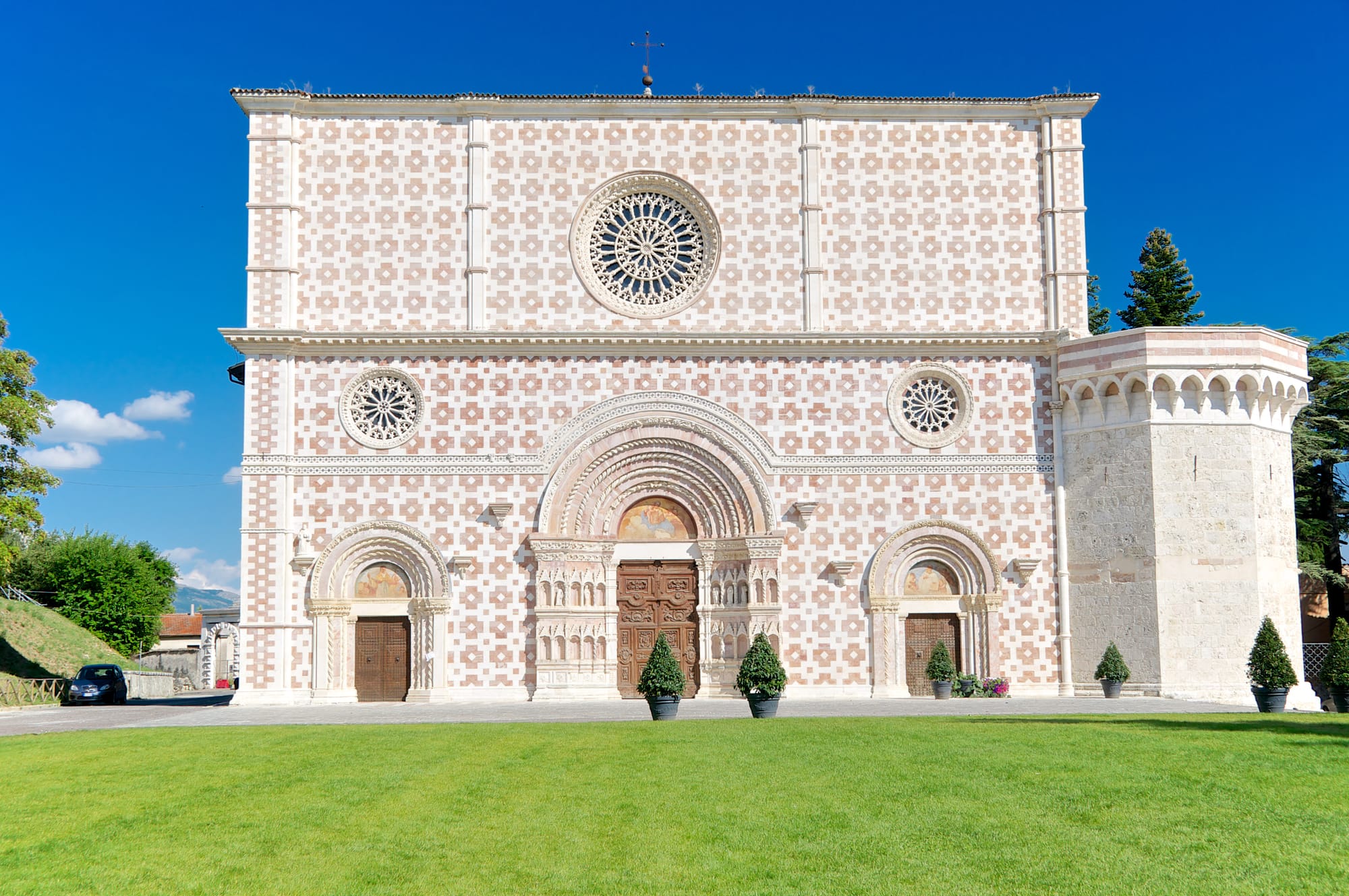
This late 13th-century building, which is located just outside the city walls, becomes the scene in summer of a religious event that attracts a multitude of people, drawn by the solemnity of the rite, the festivities on the side and the charm of the ancient that endures. This is the Perdonanza Celestiniana, the annual jubilee instituted by Celestine V in 1294 and included, as of 2019, in UNESCO's intangible cultural heritage list. The rite, handed down uninterruptedly since its inception and this year reaching its 730th edition, involves several Abruzzi municipalities, already many days before the highlight dates, with walks, processions and re-enactments that convoy to the capital on the final and most intense days, culminating with the opening of the Holy Door of the Basilica, the oldest in the world! Celestine V's papal bull grants plenary indulgence to anyone, confessed and sincerely repentant, who enters the basilica of St. Mary of Collemaggio, between Vespers on Aug. 28 and Vespers on Aug. 29.
99 Spouts Fountain
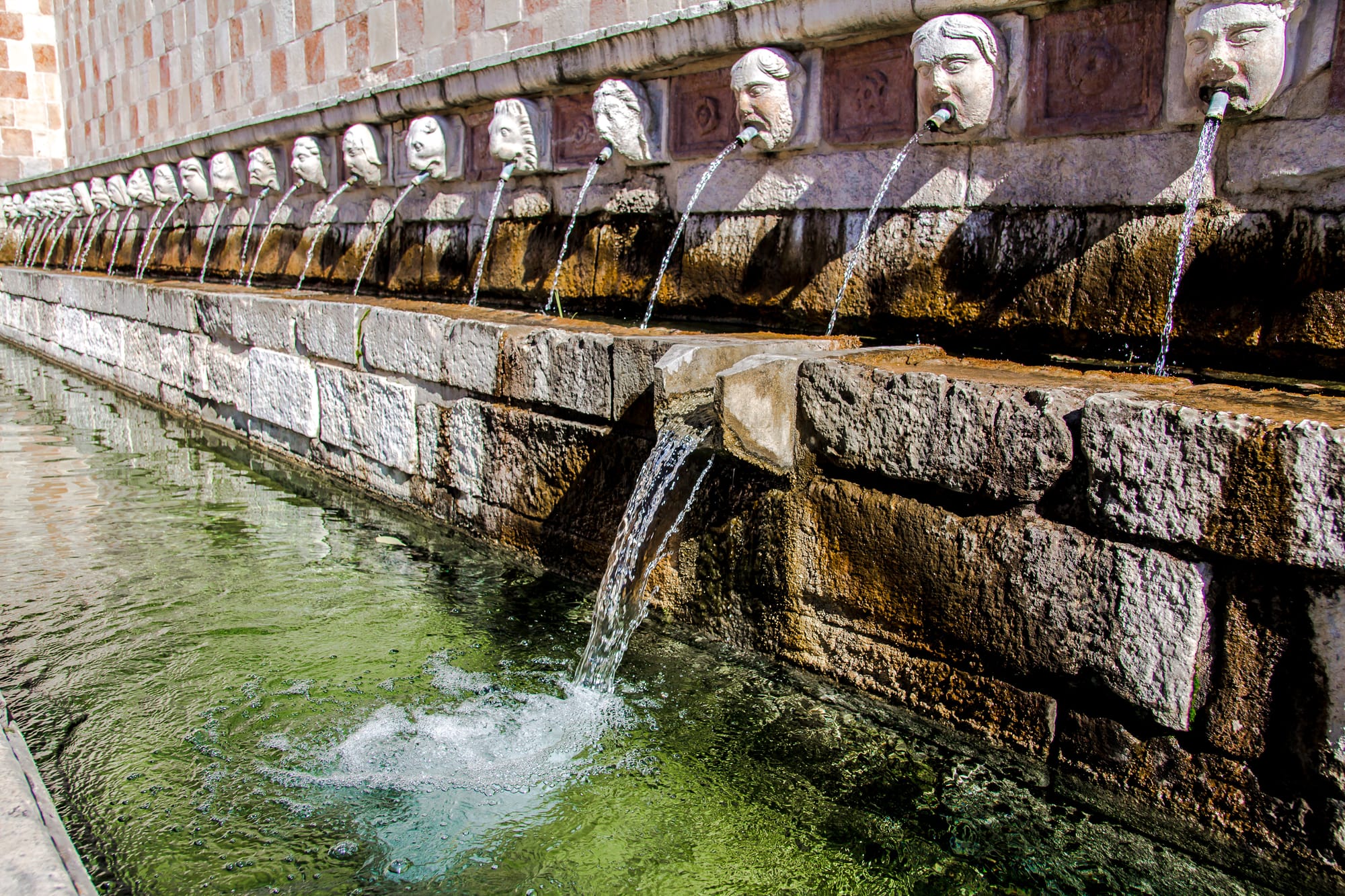
Returning to the number 99, this always redounds in nursery rhymes, proverbs, town planning, and interesting legends, which need to be explored, linking L'Aquila to ancient Jerusalem and the Templar order. Ninety-nine are the spouts from which the water of the fountain, built in the 13th century, flows. The perimeter walls of the structure are decorated with red and white local stone blocks, the same as those found in the facade of the Basilica of Santa Maria di Collemaggio. The fountain is one of L'Aquila's most important monuments, on Italy's list of national monuments since 1902. The 99 spouts sprout from the mouths of as many masks that symbolize the lords of the 99 castles that founded the city.
Strong Spanish
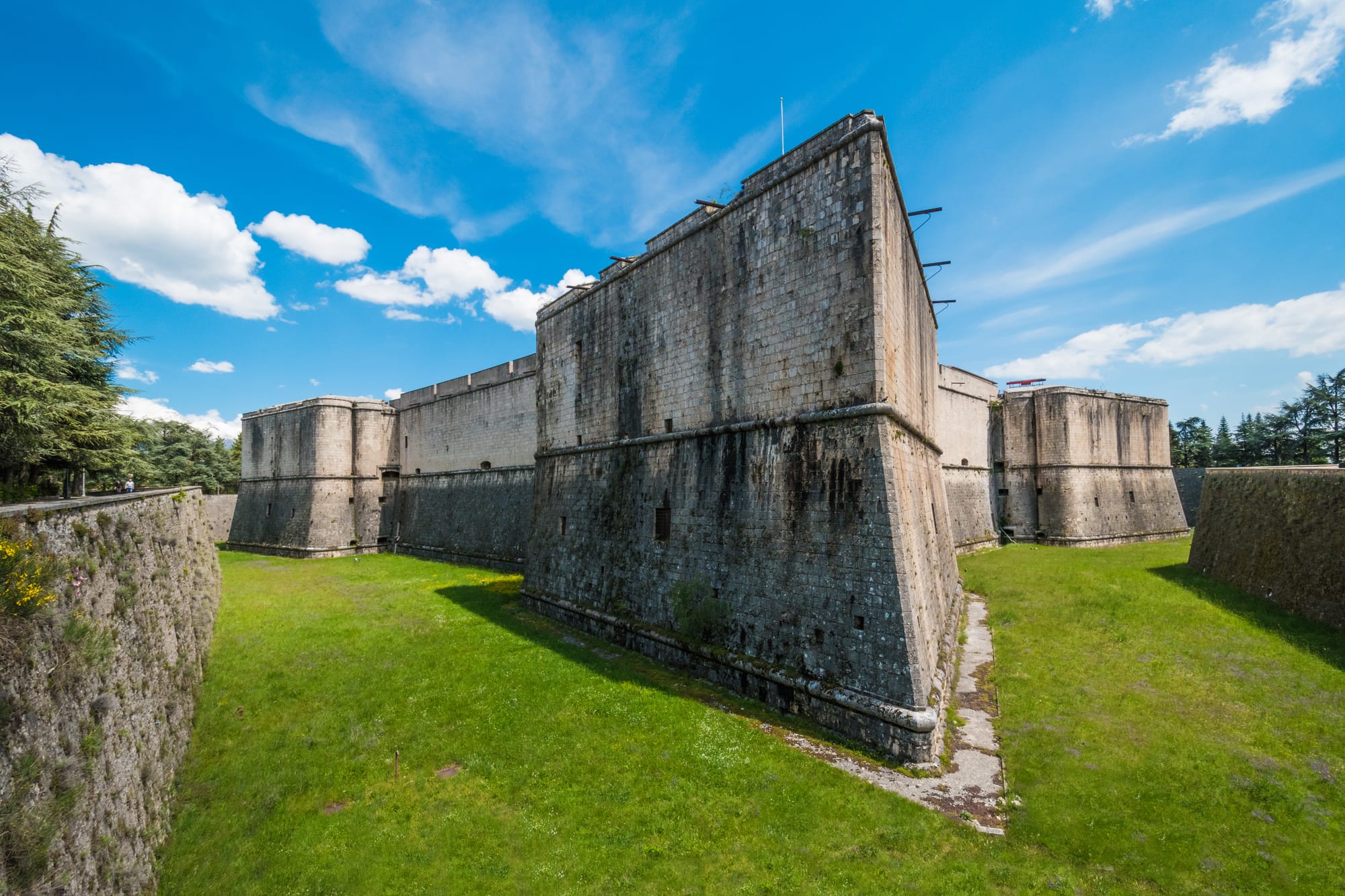
Speaking of castles, the east bastion of the 16th-century castle-a legacy of 16th-century Spanish rule-preserves the skeleton of a mammoth(Mammuthus meridionalis) found in 1954 in the hamlet of Madonna della Strada in the municipality of Scoppito, 15 km from L'Aquila. The fort has historically been the home of MUnDA, the national museum of Abruzzo now located in the former slaughterhouse, which houses a range of works from the archaic to the modern age.
Amiternum
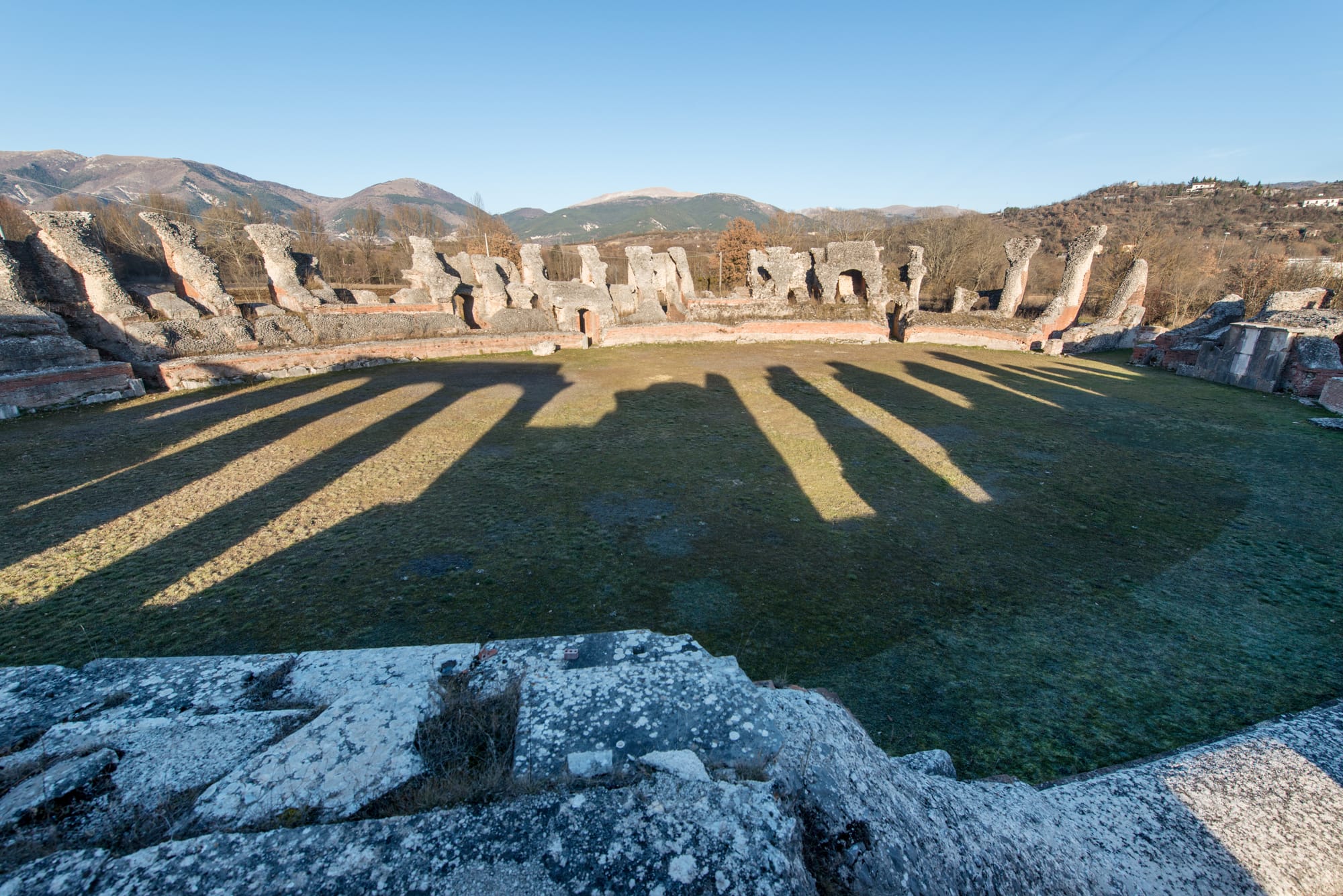
Just a few kilometers from the center, in the hamlet of San Vittorino, the archaeological site of Amiternum preserves the remains of the ancient Italic city founded by the Sabines, then conquered by the Romans in the 3rd BC. Among the structures present are a 1st-century AD amphitheater, a theater from the Augustan period, a villa from the late imperial period, and remains of baths and an aqueduct.






